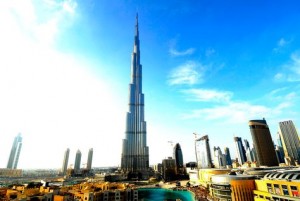Source: www.arabianbusiness.com
Dubai’s index edged higher, but trading was lacklustre as investors await quarterly earnings from bellwether Emaar Properties.
 Emaar ended flat. The developer is forecast to a report a 6.8 percent rise in third-quarter profit, according to analysts polled by Reuters.
Emaar ended flat. The developer is forecast to a report a 6.8 percent rise in third-quarter profit, according to analysts polled by Reuters.
“Locally, investors are waiting on Emaar,” said Haissam Arabi, chief executive and fund manager at Gulfmena Alternative Investments.
Emirates NBD climbed 1 percent and Dubai Financial Market added 1.1 percent.
The index rose 0.2 percent to 1,747 points.
In Abu Dhabi, Aldar Properties climbed 2.8 percent and Sorouh Real Estate added 1.7 percent.
Waha Capital rose 2.5 percent after reporting a jump in quarterly profit.
The UAE capital’s measure climbed 0.5 percent to 2,821 points, its highest close since April 25.
Industries Qatar hit a 24-week high, tracking gains in regional rival Saudi Basic Industries Corp (SABIC), while solid quarterly earnings also support Doha-listed stocks.
IQ climbed 2.9 percent to its highest finish since May 6. On October 14, the firm reported a 28 percent increase in third quarter net profit, beating analysts’ forecasts on higher-than-expected steel margins.
“Industries Qatar’s earnings were good, but I don’t think today’s move is about these – it is tracking gains in SABIC,” said Robert Pramberger, acting head of asset management at Doha-based investment company The First Investor.
SABIC was up 0.3 percent, taking its gains to 4.5 percent since October 17.
Qatar’s index climbed 0.6 percent to 7,774 points. It is up 11.7 percent in 2010 to be the top performing Middle East benchmark.
“Qatar has decoupled from the region in terms of earnings – Qatar companies were expected to do well as the country’s GDP growth trickles down into sectors like banks, industrials and services,” said Pramberger.
“People are still worried about the global economy and so many people would prefer to invest in lower risk countries – Qatar is a much safer bet than Dubai, for example, for long-term investors.”
Qatar’s economy is expected to grow 14 percent in 2010, according to a September Reuters poll.
The Kuwait and Oman benchmarks edged higher in subdued trade, with few catalyst to draw in investors.
Kuwait banks were mixed. National Bank of Kuwait dropped 2.9 percent and Boubyan Bank fell 3.2 percent, but Gulf Bank reversed initial losses to end 2 percent higher.
Kuwait’s index climbed 0.3 percent to 6,963 points, but volumes slumped to a four-week low.
In Muscat, Oman Cement edged up 0.2 percent after reporting its nine-month earnings.
“Oman Cement managed to sustain its sales volume on quarterly basis,” said Gunjan Gupta, head of research at Oman Arab Bank.
Rival producer Raysut Cement climbed 1.1 percent to 1.261 rials. The firm is holding acquisition talks with several companies and expects to reach an agreement within a month, its chief financial officer said on Sunday.
“Raysut has already crossed the 50-day moving average and we expect it to reach 1.280 rials,” said Gupta.
Oman’s measure rose 0.03 percent to 6,544 points.
Saudi Arabia’s index edged higher to claw back some of its October losses, but investors are seen looking towards global markets for cues after local quarterly results largely fail to excite.
Saudi Basic Industries Corp (SABIC) climbed 0.3 percent, hitting a four-month high and extending gains since it reported a 46 percent rise in third-quarter profit, beating analysts’ forecasts.
Samba Financial Group fell 0.8 percent and Banque Saudi Fransi dipped 2.4 percent. Bank sector third-quarter profits have slumped, broadly missing estimates as rising provisions bite.
“Apart from SABIC and Mobily, many Saudi companies, especially banks and petrochemicals, have reported disappointing figures,” said Haissam Arabi, chief executive and fund manager at Gulfmena Alternative Investments.
“Banks had higher provisions and no real growth in their loan portfolio or even deposits, so the Saudi banking sector is at something of a standstill.”
Etihad Etisalat (Mobily) climbed 0.5 percent. The telecoms operator posted a better-than-expected 41-percent rise in quarterly profits on Oct. 17, helped by a fall in the cost of international networks and higher broadband revenues.
Saudi Arabia’s index edged up 0.02 percent to 6,288 points, trimming its October losses to 1.7 percent.
“Saudi has been pretty stable, despite some disappointing numbers and I don’t expect there to be a correction — we should start to see some accumulation, but regionally we need a new catalyst to break out to new highs and I think that will have come from the global macro outlook,” said Arabi. (Reuters)












